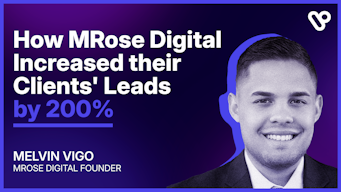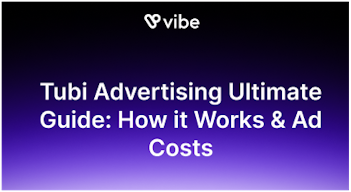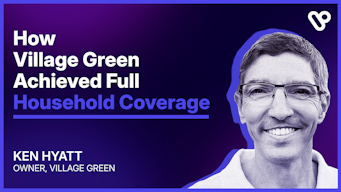How CTV Can Be Your Ad Agency's Secret Weapon
The marketing world can feel like a scary place right now, when a simple scroll through LinkedIn leads to headlines like “Is it time for advertisers to start panicking?” and “Does the death of 3rd party cookies mean the death of targeted advertising?” That’s way too much “death” for LinkedIn, if you ask me. And where do scared businesses turn to when they have no.flippin.idea.what.is.happening? Agencies, of course! But wait, do you feel like you have the answers your clients are looking for?
CTV is all anyone’s been talking about this year, and if your clients haven’t asked you about it yet, they will. So what is CTV advertising exactly? Connected Television advertising allows brands to deliver their message to targeted audiences and channels in real-time, at prices that increasingly match, if not beat, social media and Google Ad CPMs (Cost Per Mille). That means clients who never even considered television as a potential marketing channel can now afford it, understand it, and most importantly, measure its impact.
Here’s how it works: advertisers define their campaigns and budget types, target audiences by location, gender, age, screen type, and channel type, upload their creative, and begin delivering their ads immediately, with campaign results arriving to their dashboard in real-time. Most importantly, the Vibe.co self-serve platform - the first of its kind - is made specifically to easily manage multiple accounts and brands.
Here’s why your next client recommendation should be for CTV:
- It’s easy for you to project manage
- It will increase client retention
- CTV’s exponential growth shows no sign of stopping soon… and neither does Vibe’s
CTV is easy. How easy? We had a 10 year old do it.
Project management has become increasingly complicated for advertising agencies, as they struggle to maintain strong client relationships remotely, and manage an ever-shifting marketing media landscape. Our recommendation? Don’t let that scare you away from exploring CTV. Most of the terms, categories, and budget types you will encounter when managing a CTV campaign will be familiar from social media and Google campaign dashboards.
In fact, managing several CTV accounts and campaigns is so straightforward you only need one account manager to handle them all. Agencies can define advertisers, campaigns, and strategies in one spot, on the dashboard homepage.
But what about CTV ad performance?
It’s a familiar business-meets-agency story: it starts with big dreams of brand archetypes, color palettes, and value propositions, but there always comes a time - even if implementation was not in scope - when the client turns to you innocently and asks the dreaded question: “Oh, but wasn’t the point of all of this to get results and clear ROI?” No matter how earnest a client is when they come to your branding work, ROI always eventually becomes the gauge for the quality of your deliverables. This is where introducing CTV to a client’s media mix can really help you shine.
By placing their ads on CTVs and OTT content, your clients will benefit from the optimal big screen format and brand prestige of television, while precisely targeting audience segments and getting clear attribution reports in real-time.
CTV as a tool for client retention
Introducing clients to a powerful new tool can be immensely beneficial for client retention, for several reasons. By harnessing the power of CTV, your agency can:
- Educate your clients at a moment when new digital advertising strategies are at the top of everyone’s minds.
- Become the authority on Connected Television advertising by sharing these simple CTV creative best practices.
- Confidently suggest pivots when necessary, and implement them as simply as you would a social ad.
- Leverage real-time reporting to test campaigns early and often, in a way that was never possible with walled gardens like Meta and Google.
- Stand out from the pack by championing an innovative solution before it becomes mainstream.
- Deliver reliable, transparent results and confidently prove to your clients that their investment was worth it.
- Develop a true partnership with your clients by inviting them to work on their Vibe account with you, as editors (you remain the Admin).
CTV ad budgets are skyrocketing
A recent article from eMarketer predicts that:
“UPFRONT CTV AD SPENDING WILL GROW BY 34.6% TO $6.41 BILLION THIS YEAR. FOR CONTEXT, THAT’S ABOUT HOW MUCH WE HAD PREDICTED IN OUR INAUGURAL FORECAST WOULD BE SPENT ON TOTAL CTV ADVERTISING IN 2019. THE CTV AD MARKET HAS GROWN SO MUCH THAT THIS YEAR’S UPFRONT SPENDING ALONE WILL MIRROR WHAT WAS SPENT ON CTV IN ITS ENTIRETY THREE YEARS AGO.”
What does that mean? It means CTV is performing incredibly well, even at this early stage, so you can recommend it confidently. It also means that platforms like Vibe.co that support this format are rapidly growing and improving, to your benefit.
CTV platforms are refining their targeting capabilities (interest, behavioral, contextual), their attribution models (MMP integrations, pixel tracking), and their inventory partnerships (channels and apps) as we speak. Forming relationships with one now can only benefit you and your agency, as you develop a deeper understanding of the industry and the partnerships that you could partner with long-term, while exposing your client to a high-performance medium that only gets better with time.


